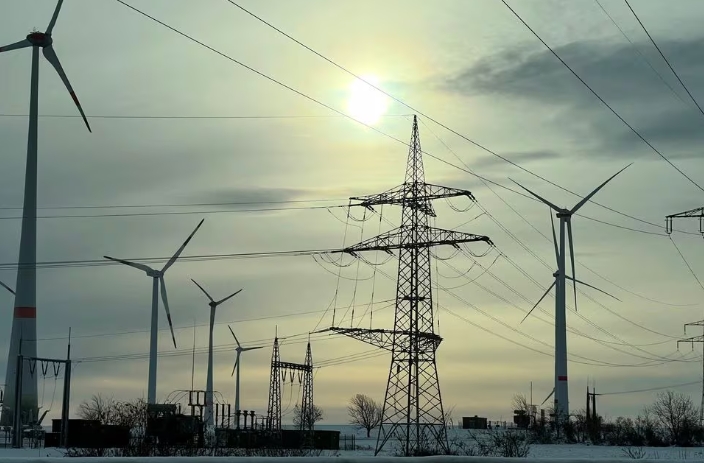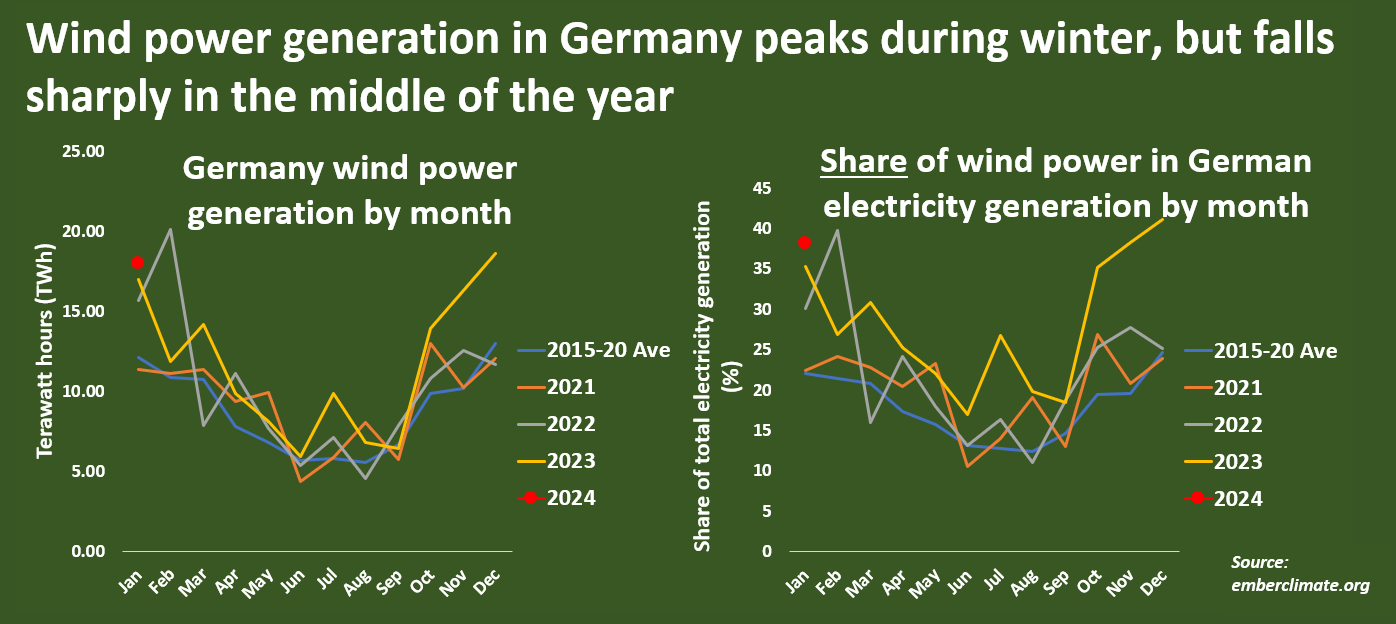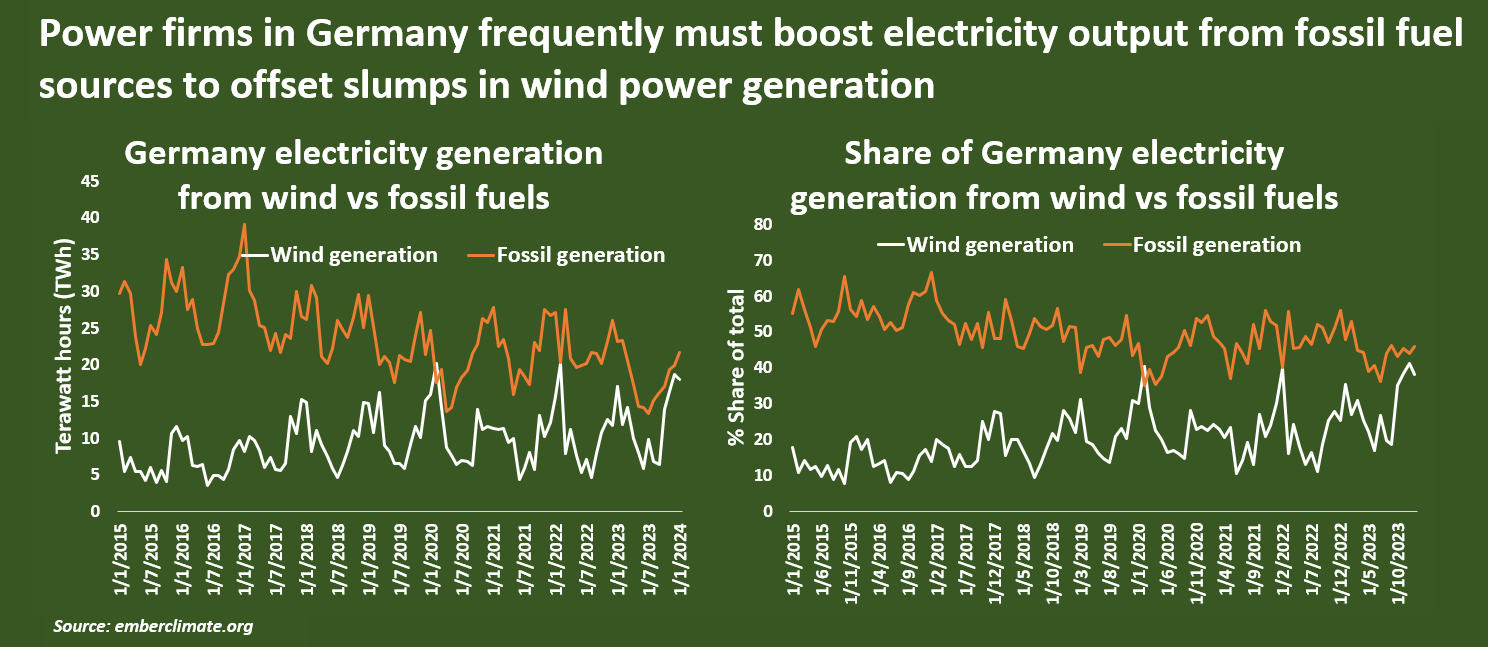
But electricity firms are bracing for an annual drop in wind speeds that has historically slashed wind output in spring and summer from the peak generation levels seen during winter.
The German compound word "dunkelflaute" captures the phenomenon. Made of up "dunkelheit", which means darkness, and "windflaute", which means weak winds, the term describes periods when wind speeds drop and result in little to no electricity generation.

Wind power generation in Germany peaks during winter, but falls sharply in the middle of the year
Total drops in wind generation are rare, but the German power system experiences sharp falls in wind output every year, requiring utilities to compensate with higher output from fossil fuels that raise emissions.
SHARP SWINGS
The drops in wind output following the winter months can be extreme.
During the first quarter since 2019, wind power produced an average of 14.16 terawatt hours (TWh) of electricity, or 28.4% of Germany's total electricity, data from energy think tank Ember shows.
But wind generation has dropped to an average 7.87 TWh during the second quarter, accounting for 19% of total electricity output during those months.
Wind output has historically dropped even further during the third quarter, to an average of less than 7 TWh from 2019 through 2023, when wind power's share of overall electricity generation averaged only 16.3%.
Wind output has then tended to recover in the final quarter, averaging 12.8 TWh or 27.5% of the electricity total.
NO EASY FIX
The drops in absolute and relative wind output have come despite a 13% expansion in wind generation capacity from 2018 to 2022, and data that is widely expected to show a sharp rise in wind generation capacity in 2023.
Further increases in the total operational footprint of Germany's wind farms - both onshore and offshore - are expected annually going forward. Along with solar capacity gains, additional wind capacity should allow renewables to account for around 83% of Germany's total power generation by 2028, according to the International Energy Agency (IEA).
Nonetheless, the seasonal ebbs and flows of wind speeds across German wind farms look set to persist due to changes in air pressure as temperatures swing from cold to hot to cold again throughout the year.
Cold air is denser than warm air and so generates greater wind speeds for turbines during the winter months, while jet streams carry warm air during summer and result in lower wind speeds at turbine levels.
EMISSIONS IMPACT
The regular and pronounced drops in Germany's wind generation force power firms to deploy varying quantities of power from other sources to balance system needs.
Power firms in Germany frequently must boost electricity output from fossil fuel sources to offset slumps in wind power generation

Power firms in Germany frequently must boost electricity output from fossil fuel sources to offset slumps in wind power generation
Output from solar sites peaks during the middle of the year, allowing for utilities to offset some of the reduced wind generation with increased solar output. That allows utilities to sustain relatively high levels of clean power output even when wind production dies down.
But power firms must also sustain output from natural gas and coal-fired plants year-round, especially at night when solar production stops.
The resulting fossil-based output means German utilities emit an average of 15 million metric tons of carbon dioxide a month during the second and third quarters of the year from power generation, Ember data shows.
That emissions load is down from an average of 19 million tons a month over the rest of the year, but would be higher were it not for the fact that Germany has a relatively low penetration of air conditioners, which hog electricity and tend to be used extensively during the warmest periods of the year.
However, as more of Germany's heating and cooling systems switch from gas-fired boilers to electricity-based heat pumps, the country's total electricity consumption trends are likely to shift and potentially peak during summer due to high air conditioning demand.
That in turn would place even greater strain on Germany's power system during spells of weak wind speeds, and mean even greater deployment of fossil fuels during any future dunkelflautes.